-
How to grow your own wedding bouquet: The truth about why you shouldn’t!
 Lee Burkhill: Award Winning Designer & BBC 1's Garden Rescue Presenters Official Blog
Lee Burkhill: Award Winning Designer & BBC 1's Garden Rescue Presenters Official Blog

Are you dreaming of a wedding filled with personal touches and heartfelt moments? One beautiful way to infuse your special day with meaning is by growing your own wedding bouquet, but don't be fooled by online DIY bride guides. Growing your own bridal flower bouquet is not for the faint of heart!
Whether you're a seasoned gardener or just discovering your green thumb, the journey of growing your own bridal bouquet can be a nightmarish adventure filled with love, panic, worry, excitement and anticipation as to whether it has all been worth it.
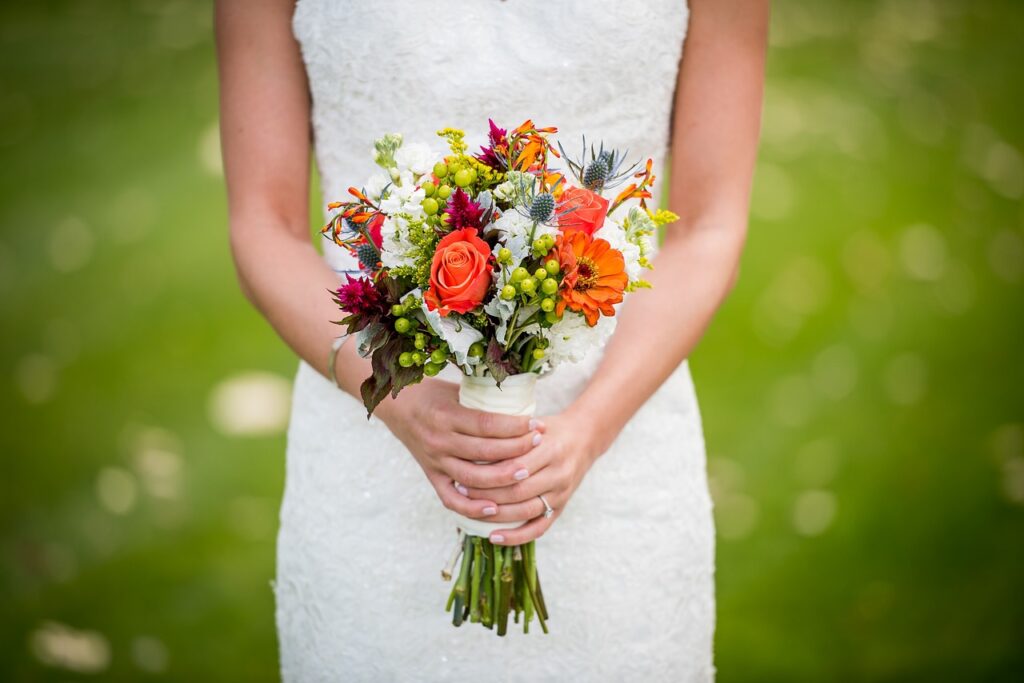
The big question is, 'Should you try and grow your own bridal bouquet?'. The answer for 99% of brides is most certainly not.
This article will explain why you should give growing your bridal bouquet a swerve unless you're already a seasoned gardener. For those green-fingered experienced gardeners amongst you, I will then detail how to plan to grow your own bridal bouquet (even then, it may still put you off!).
In this blog, we'll explore everything you need to know about growing your own bridal bouquet, from why you should avoid it entirely or, if you are serious about undertaking this epic challenge then how to select the right flowers, grow them, have a contingency in place and plan to arrange them for the big day.
Deep breaths, everyone. We are entering wedding territory!
Have you been researching how to grow your own cut flowers for your wedding day? If so, you may have read opening statements such as the one below.
"Don't worry – you don't need a sprawling garden or years of gardening experience to cultivate your dream bouquet. With a bit of planning, creativity, and a touch of patience, you can bring your vision to life and harvest a stunning array of blooms that will take centre stage on your wedding day."
However, the reality is that growing your own bridal bouquet is one of the most stressful aspects of gardening, even as a pro. You will already have a million other things to organise for your big day, so I would always advocate leaving perishable, time-sensitive flowers and arrangements to a professional florist. You simply do not need the stress!
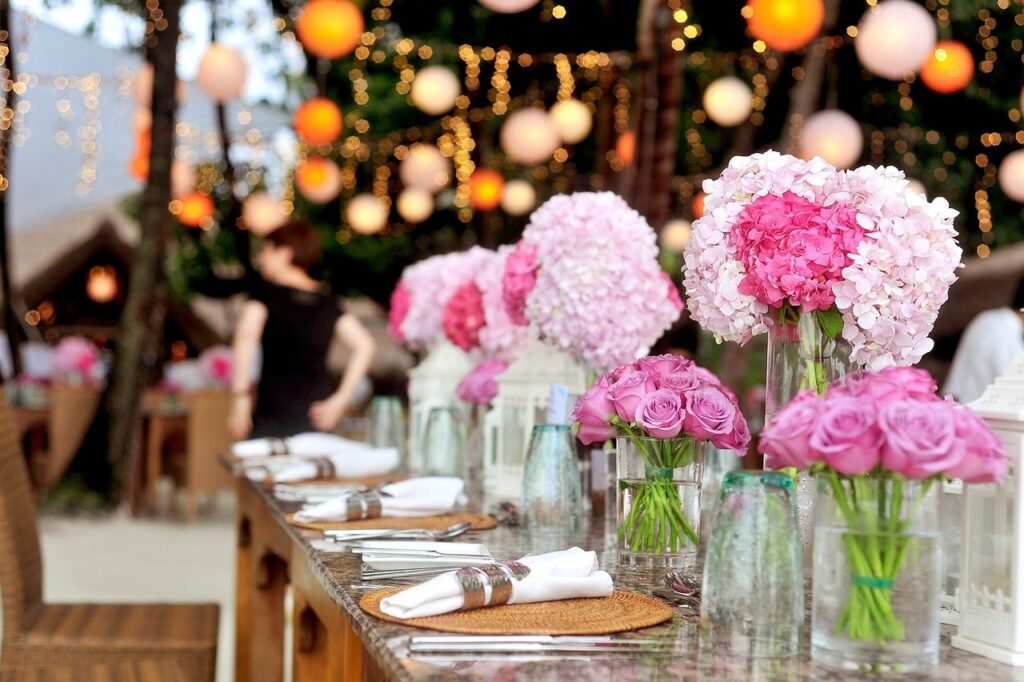
Bridal blogs and articles about growing your own flowers are often written by non-gardeners, who, after a few hours of research, think that growing cut flowers is as easy as scattering seeds and giving them some water, which could not be further from the truth!
Did you know that you can take my course and learn how to become a Garden Ninja yourself? Click here for details
The biggest issue with growing your own flowers is a combination of weather and flowering windows. Two things that are in the gift of mother nature and not the bride or groom to be gardener! Let's take a look at each of them and see why these bridal guides seem to skip over this part.
The first thing to consider is the weather when growing your own flowers. With our increasingly fluctuating weather patterns, it's hard enough for expert gardeners to know when their Dahlias are going to bloom, let alone a bouquet featuring between five to fifteen different plant species. So before you even start to plant seeds, you need to choose flowers that all bloom within the same month to ensure that they are all in full flower by the time you need them for your wedding.
Also, consider choosing bridal flowers that don't need exacting temperatures to flower or those that are more tolerant to unpredictable weather. Canna Lillies for example need full sun and heat whereas Hydrangea are much more tolerant of poor weather.
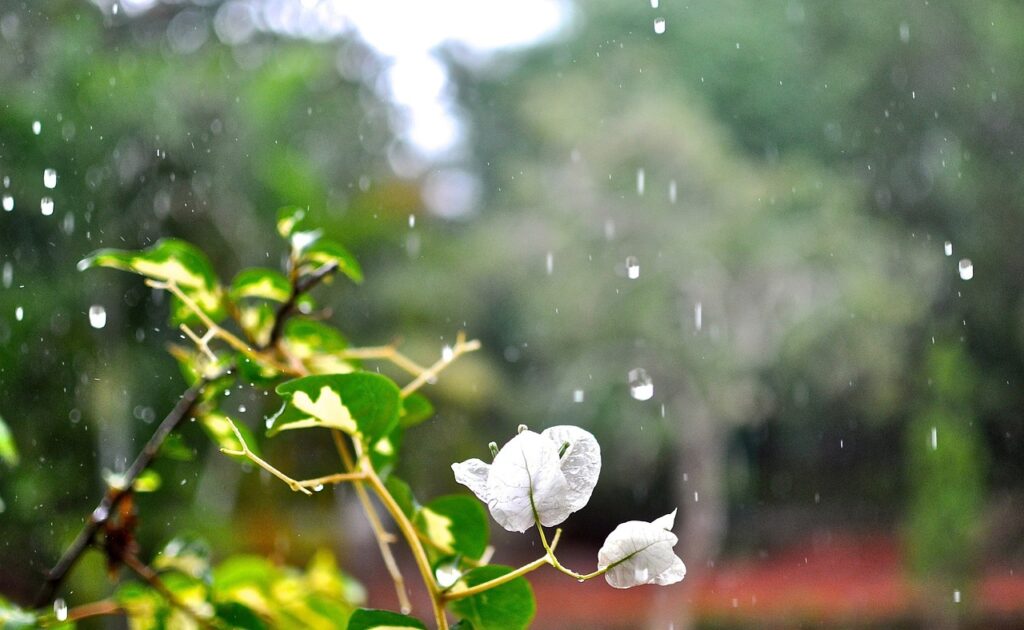
Let's take a look at a mixed bouquet of flowers that's pretty popular: Roses and Peonies with some Babys breath in there for lightness. If you want to grow these yourself, let's look at the flowering windows for a normal garden, excluding polytunnels or commercial growers with greenhouses.
Flowering windows are the times during the year when certain plants flower. You often see these flowering windows on the labels of plants or in the RHS Plant Checker online. Using this tool can help you work out the flowering windows for each of your proposed bouquet flower species.
To grow your own bouquet, you need to make sure that your rose species matches up with your peonies. Not to mention the fact your Peonies and Roses will need to have been planted 12 months before to get reliable flowers, Gypsophila/Baby's breath is usually mid-summer, but wet weather can delay it or mean a much lower yield of flowers.
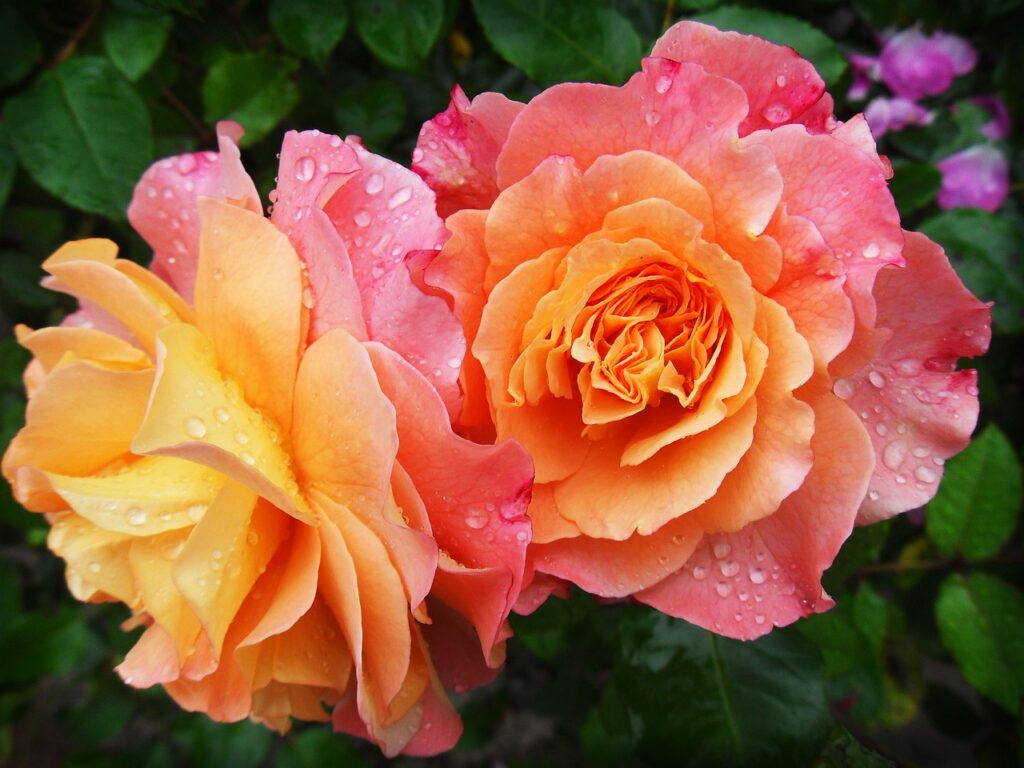
If you decide you want Tulips and Roses, you suddenly have a problem as Tulips are spring only where, whereas Roses are mid-summer. So, the flowering window of your bouquet is essential. Unless you have a glass house, heaters and some way of forcing bulbs, you will struggle to grow the plants at the right time.
If you're still up for growing your own and you know the risks involved, let's look at the best flowers for a wedding bouquet and some helpful tips on how to grow them.
If you're still confident in growing your bridal bouquet or wedding flowers, I take my hat off with this adventure! So le'ts take a look at the steps needed as a confident gardener on how to grow your own wedding bouquet.
The first step in growing your own bridal bouquet is selecting the right flowers. Consider the season of your wedding (this is essential as you can't grow roses in winter for a December wedding), the colour palette of your theme, and the overall style you envision.
Classic choices like roses, peonies, and lilies are timeless and romantic, while wildflowers and greenery add a whimsical touch. You will need some focal point flowers for your bouquet and then some background 'Bridesmaid' flowers to help support these main cut flower stars!
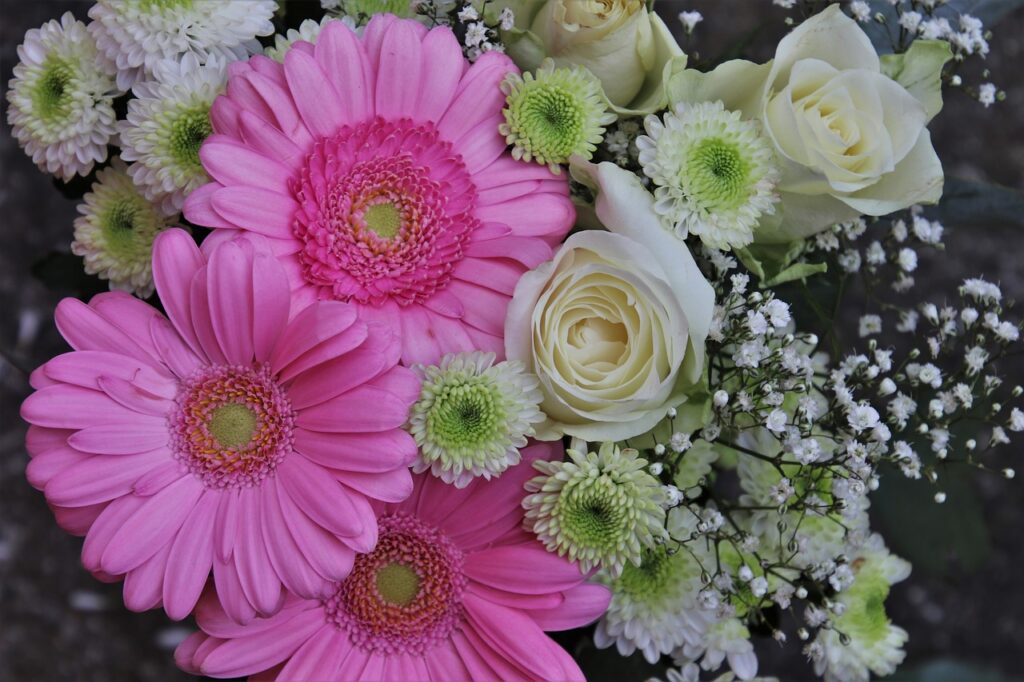
Here are 20 beautiful flowers that you can potentially grow in your garden for a stunning bridal bouquet if you have the right skill and weather for it:
Classic, romantic, and available in various colours, roses are a timeless choice for bridal bouquets. The best type of rose for a wedding bouquet is the floribunda, or hybrid tea rose, not climbing scrambling, shrub or classic tea roses. This is because hybrid or floribunda rose gives multiple flowers per plant. So you get more per rose. They are also better for cut flowers and have big blooms compared to climbing or rambling roses that are full of thorns and only small flowers.
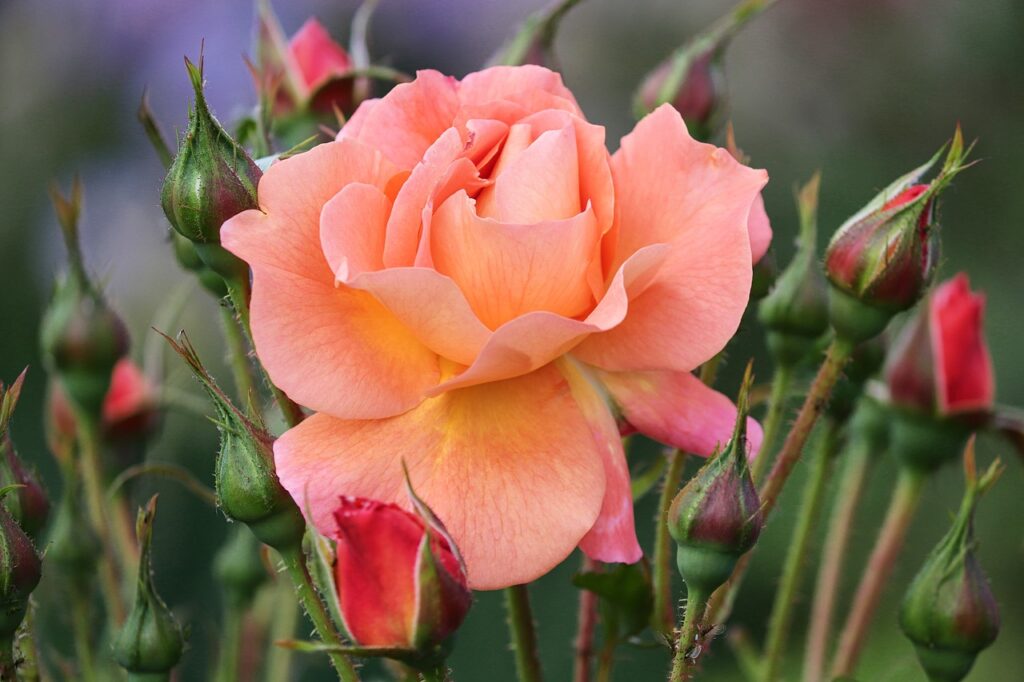
With their lush, ruffled blooms and delightful fragrance, peonies add a touch of elegance and charm to any bouquet. However, the drawback with peonies is cost. You will get maybe 3 peonies from each plant at any one time. Each Peony probably costs about £15 each. So the cost soon mounts up. Their' flowering window is short and their blooms incredibly delicate and likely to fall off in the wind or with extreme temperature changes. Cut peonies for wedding bouquets just as their flower buds are opening.
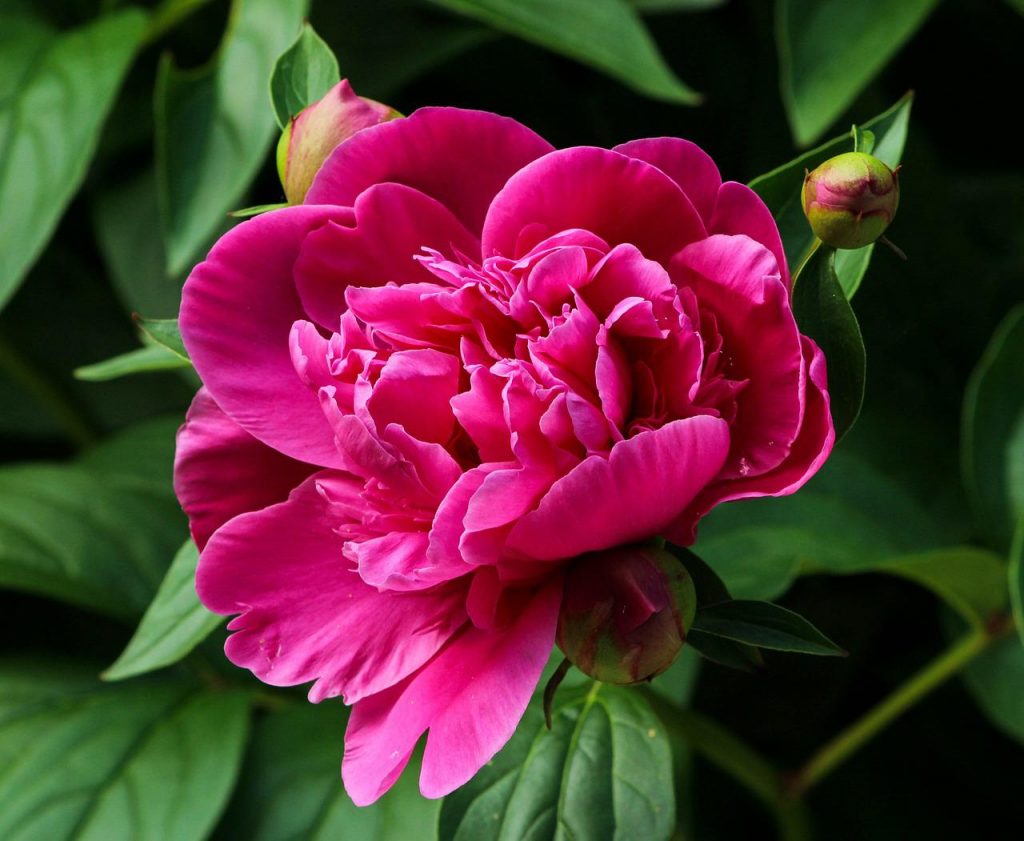
Whether you prefer Asiatic lilies, Oriental lilies, or hybrid varieties, lilies bring beauty and sophistication to bridal arrangements. Relatively easy to grow, these are a good choice for homegrown wedding bouquets as the flowers are big, and you can cut them before they open so they last longer. Always seal the steam in boiling water to stop them from going over and keep them fresh. Lastly watch out for Lily Beetle early in the season which can ravage your Lillies before they have change to bloom.
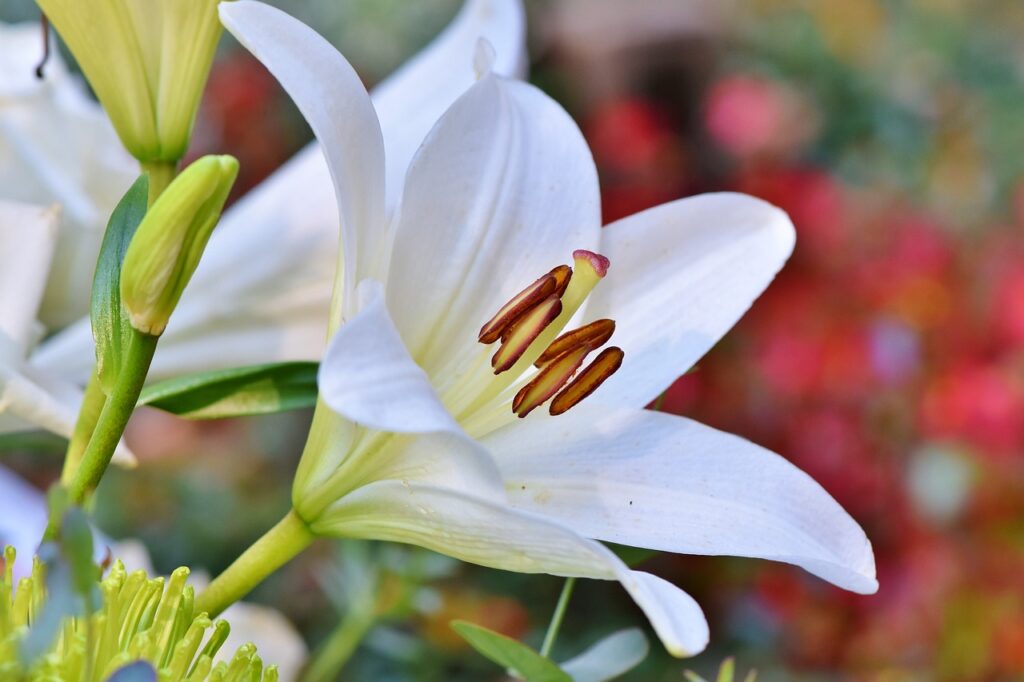
Known for their intricate petal formations and vibrant colours, dahlias make a bold statement in bridal bouquets. Probably the easiest wedding flower to grow as you can plant the tubers and in about 2 months end up with flowers with the right sunny weather. You might get 4 - 5 flowers off one tuber so budget and plant accordingly for the amount you need.
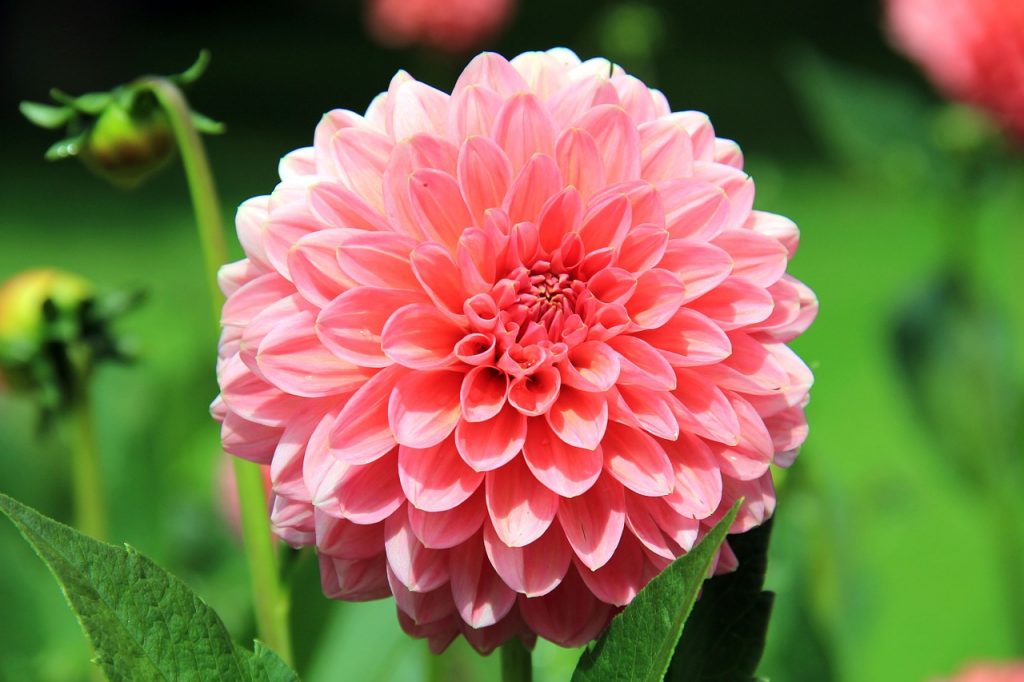
Hydrangeas are beloved for their full, voluminous blooms and come in various shades of white, pink, blue, and purple. These early summer flowers work well in a bridal bouquet as they don't tend to wilt as quickly or go over like other cut flowers. You can also use them in the winter when they have dried up. I would compliment their beautiful rusty tones with other autumnal flowers.
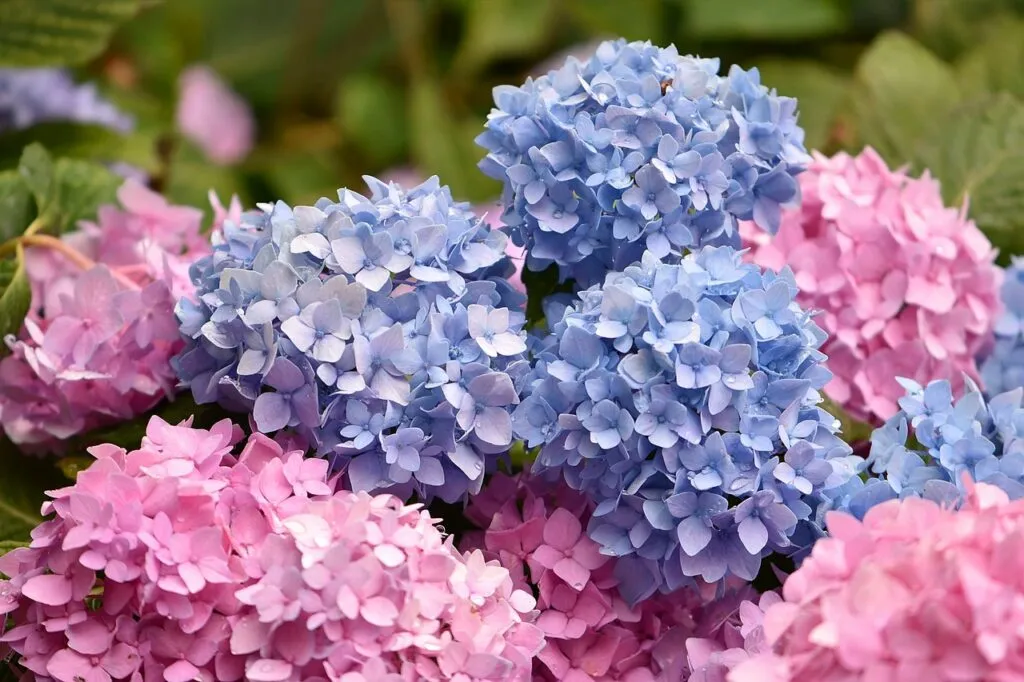
Bright and cheerful sunflowers symbolize happiness and radiate warmth in bridal bouquets. Choose dwarf varieties, as the larger sunflower cultivars are too big and heavy for a bouquet. Teddy Bear sunflowers can work really well for wedding bouquets. The quickest way to grow sunflowers for bouquets is in a green house and start them off early in the season with heat at they can take months to flower!
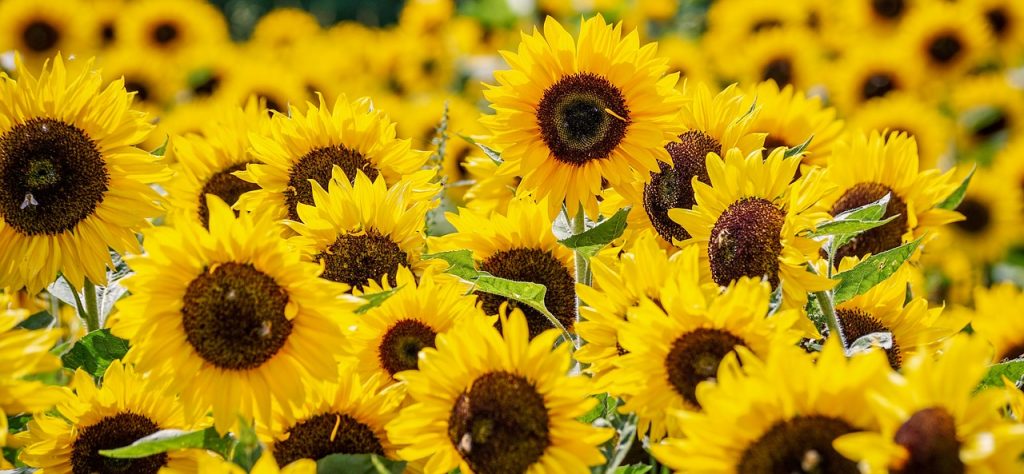
Simple yet elegant, tulips come in a rainbow of colours and add a touch of freshness to any bouquet. These work well if your wedding is in March or April. But for a mid summer wedding forget it, you'll struggle to force them indoors.
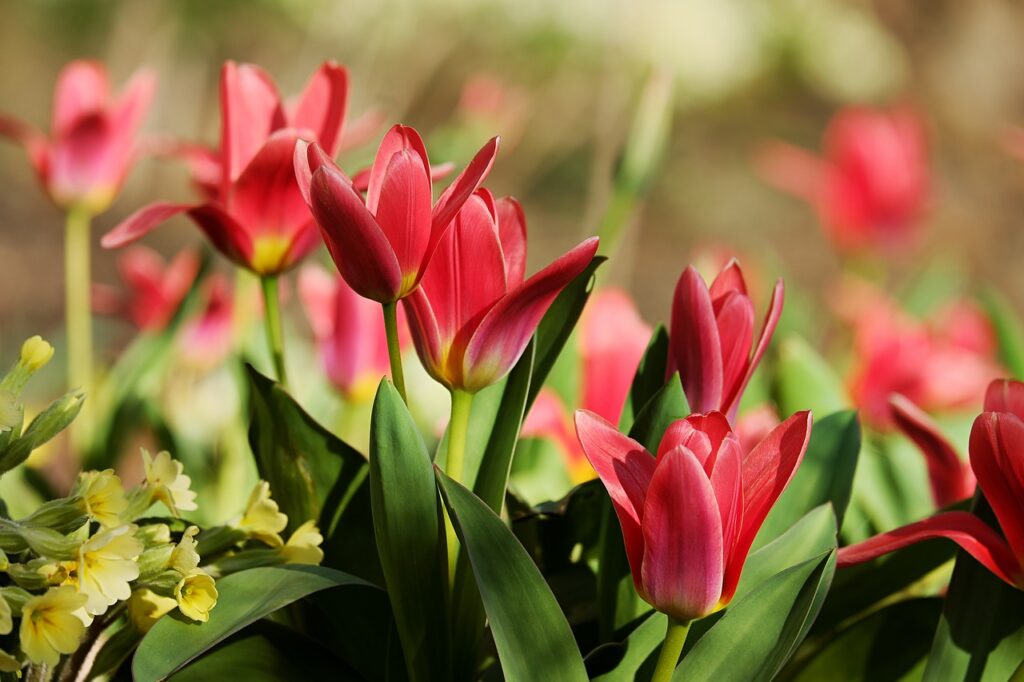
With their sleek, trumpet-shaped blooms, calla lilies exude sophistication and modern elegance. These make fantastic button holes and guest favours. As they are a semi tropical plant you're best growing these in a slightly shaded greenhouse or treat them as house plants until you are ready to cut them. Grow them in your bathroom if need be to keep the humidity high and provide a rich potassium feed for flowers.
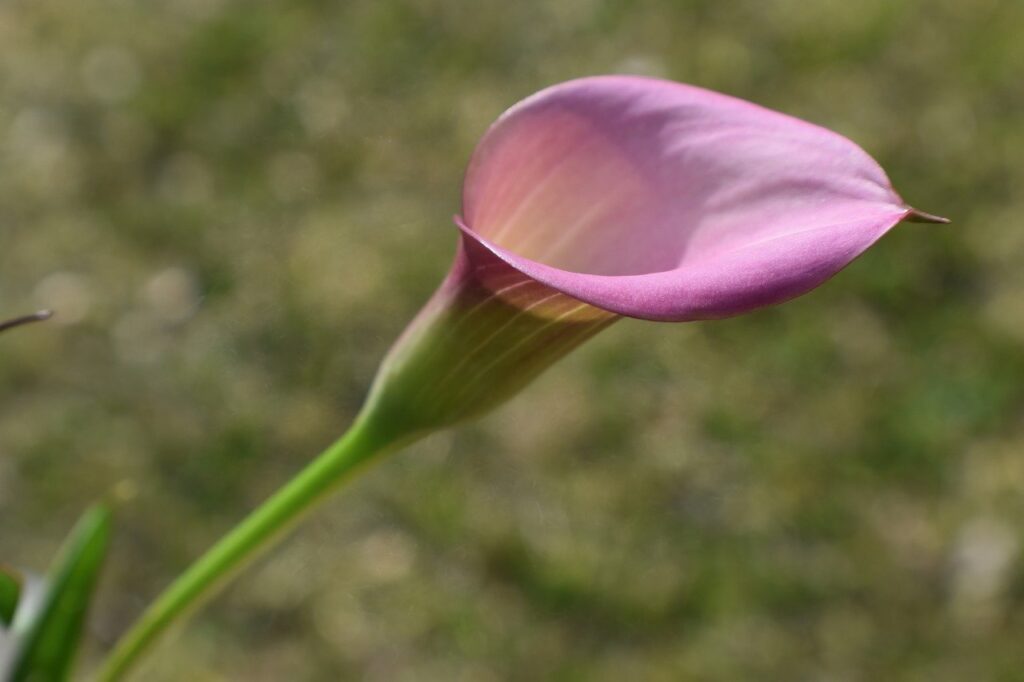
Fragrant and delicate sweet peas add a soft, romantic touch to bridal bouquets. Sow sweet peas in September the year before you need them for a better chance or early blooms. If you sow them as seeds in the spring of your wedding year, you may be disappointed in their performance. Sow far more than you need to help bulk up these smaller flowers by using them in bunches.
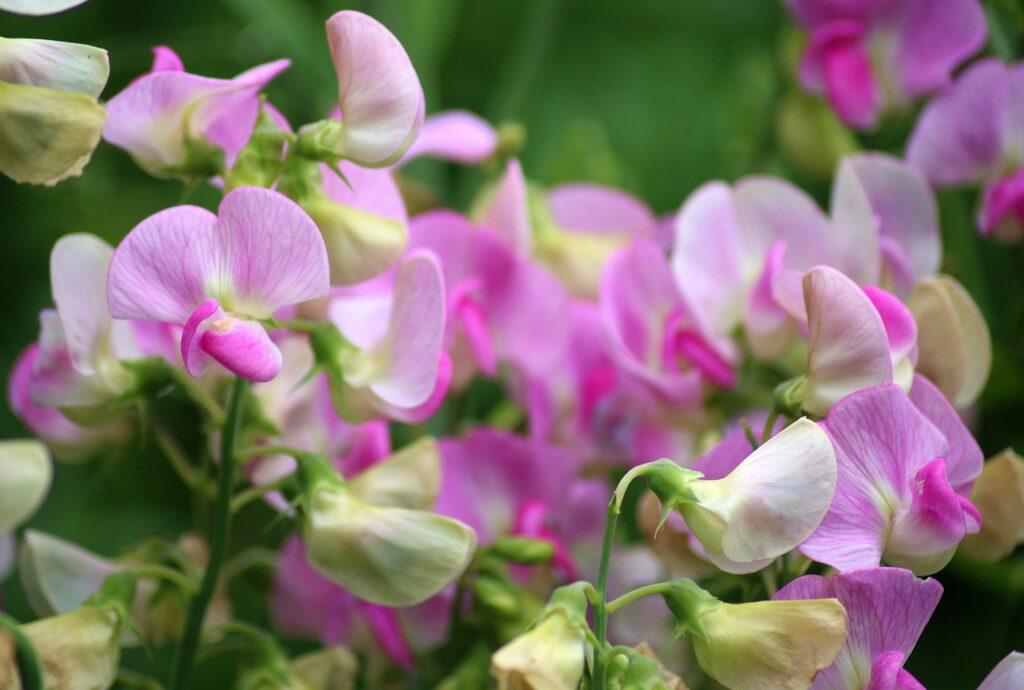
Anemones' striking black centres and vibrant petals add drama and contrast to bouquets and can add a cure fairy tale feel to your wedding day. The best way to grow them is by planting their corms (a bit like bulbs but not quite) in spring in pots or containers.
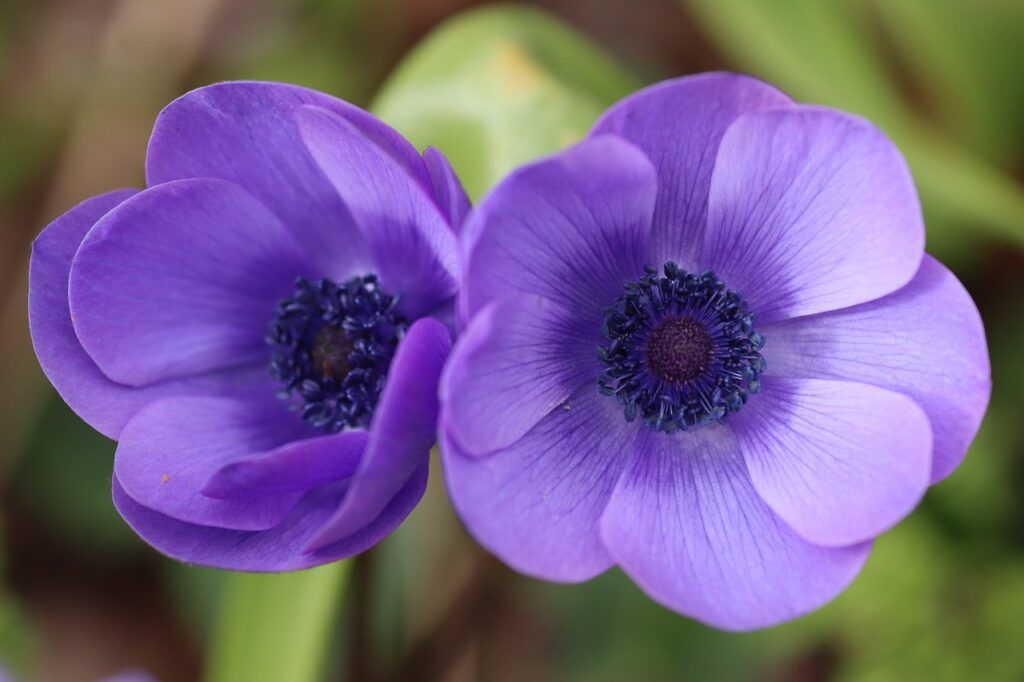
Grow them in partial shade, keep them relatively well watered, and you'll be rewarded with Anemones in late summer or early autumn. Sometimes growing them in small terracotta or plastic free pots makes them great table centre pieces without cutting them.
Tall and stately, delphiniums add height and structure to bouquets with their spiky clusters of flowers. These are probably the hardest flowers to grow for a wedding bouquet. A favourite of slugs and snails in the garden they need staking, feeding and baby sitting as soon as they emerge. Not what you want when you're planning a wedding. If possible, get a florist to supply these to save the drama!
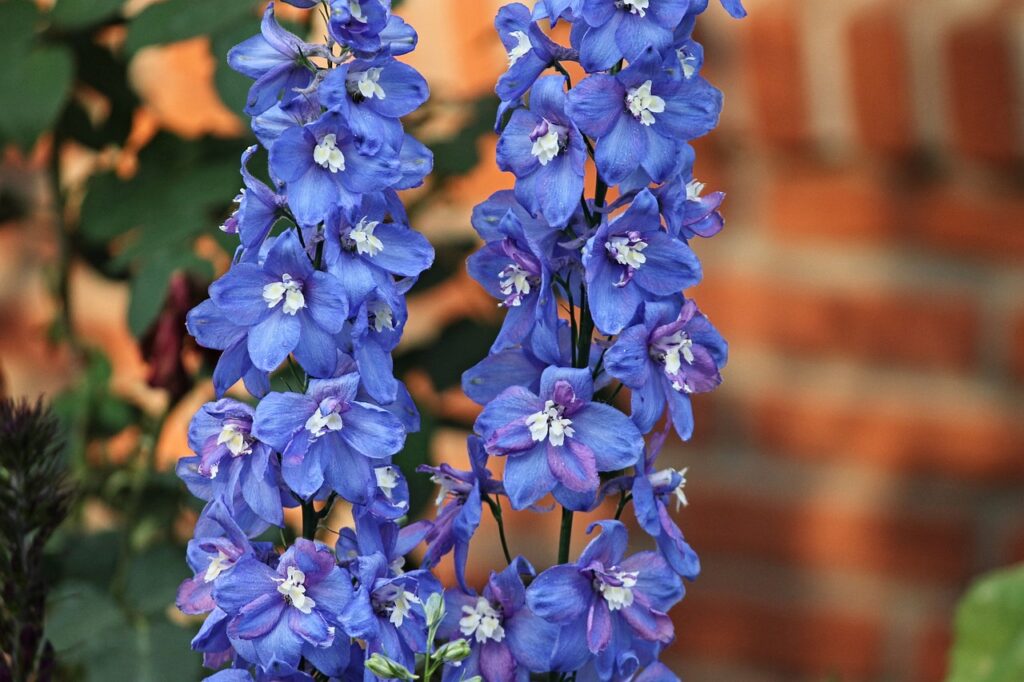
Cosmos flowers bring a light and airy feel to bouquets with their dainty, daisy-like blooms and feathery foliage. Easy to grow from seed, even as a beginner, Cosmos is probably one of the easiest flowers to grow for a wedding bouquet. The difficulty is that you need stronger stemmed flowers in the bouquet to support them, as they have a habit of becoming very floppy once cut.
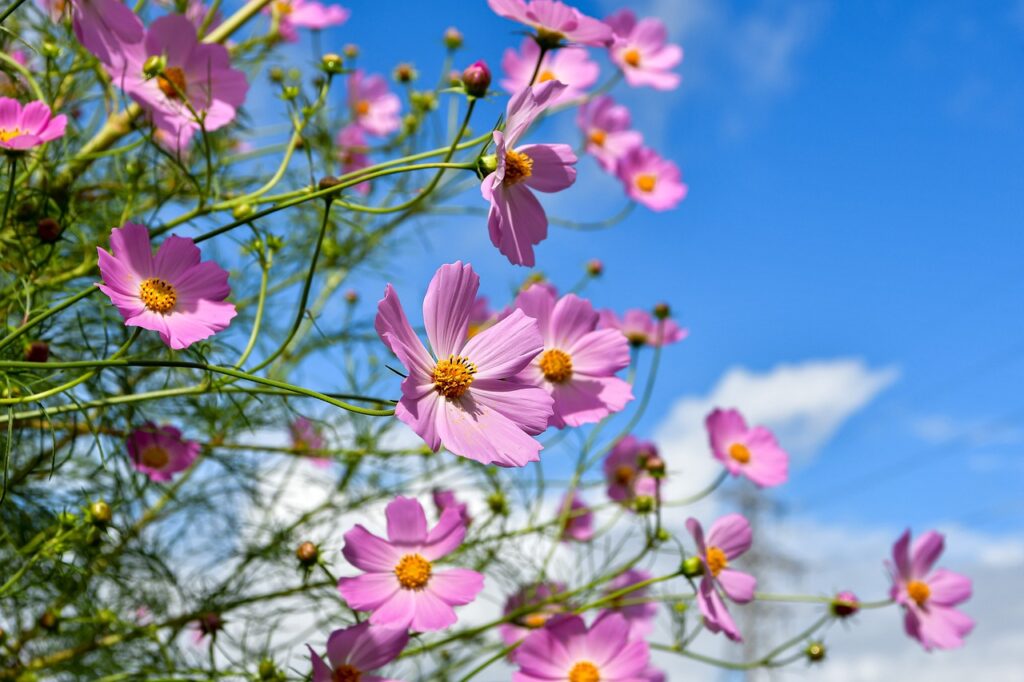
Vibrant and colourful, zinnias are versatile flowers that add a pop of personality to any bouquet. Especially if you're a wild bride or groom who likes hot colour flowers in orange, yellow or red hues! Grow these from seed under glass early in spring. Again, sow far more than n you need any make sure you use a free draining compost and they will take off. They flower mid to late summer. So once you have pricked them out and potted them on, harden them off under a cold frame and then get them in full sun!
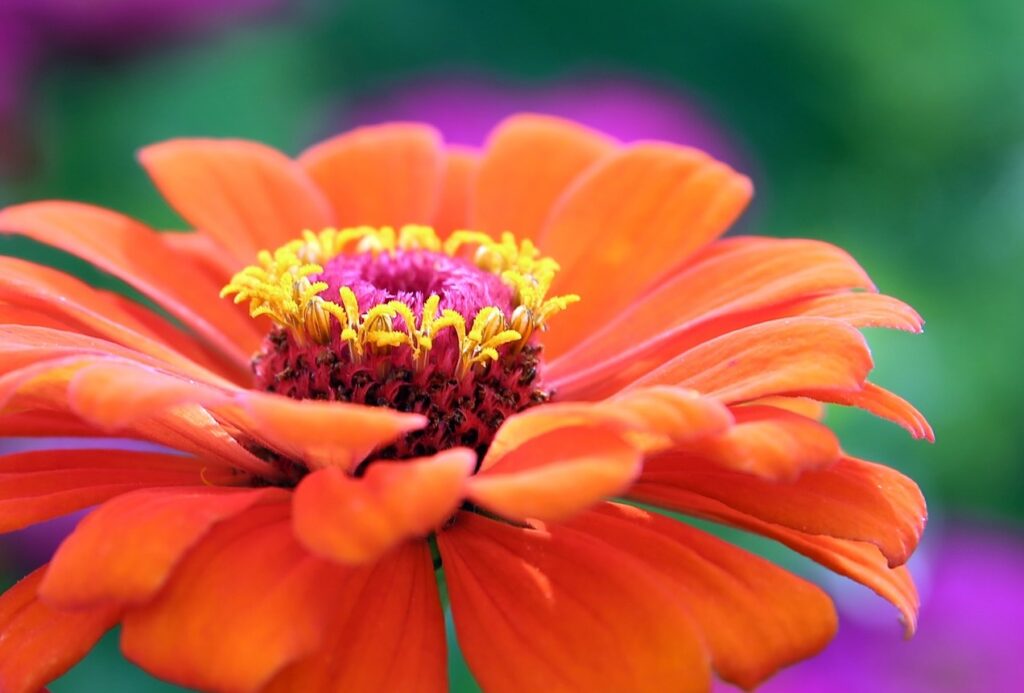
With their unique shape and vibrant colours, snapdragons add texture and visual interest to bouquets. Snapdragons for a wedding or bridal bouquet are fab as they flower from July to October in good weather, so they have a really long flowering window. However, you need to sow Snapdragons the autumn before under glass to give them enough time to grow and then flower for the following year, a bit like Sweet peas.
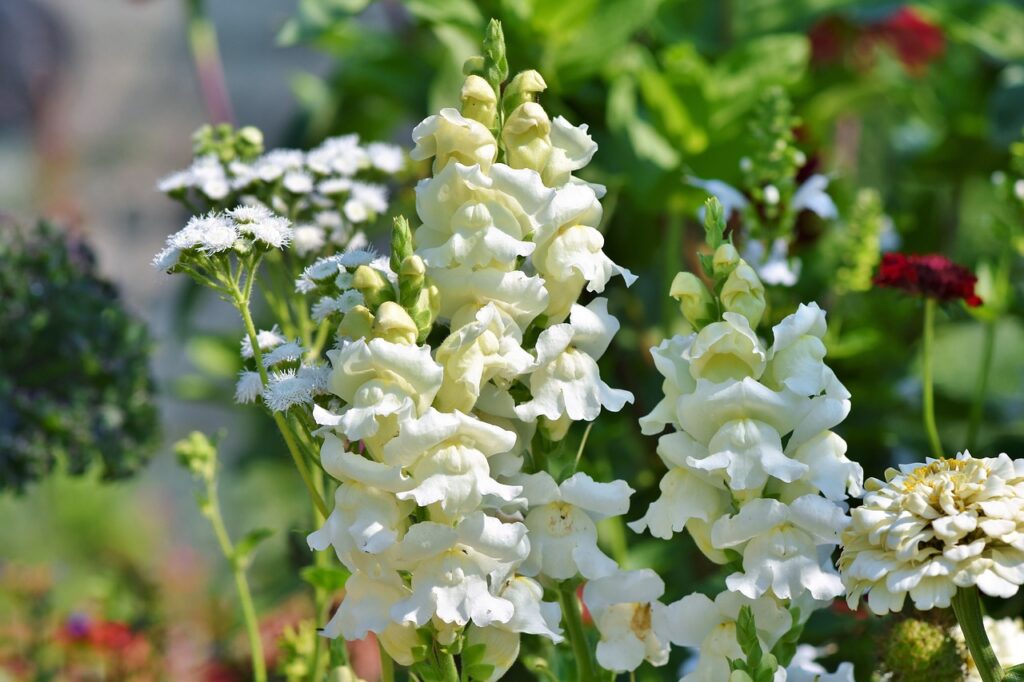
Lisianthus blooms resemble roses or peonies, which are elegant and romantic, making them a popular choice for bridal bouquets. The beauty of Lisianthus is they last for a super long time in vases and flower arrangements. It's always best to buy these in from a florist as Lisianthus is high maintenance when grown from seed.
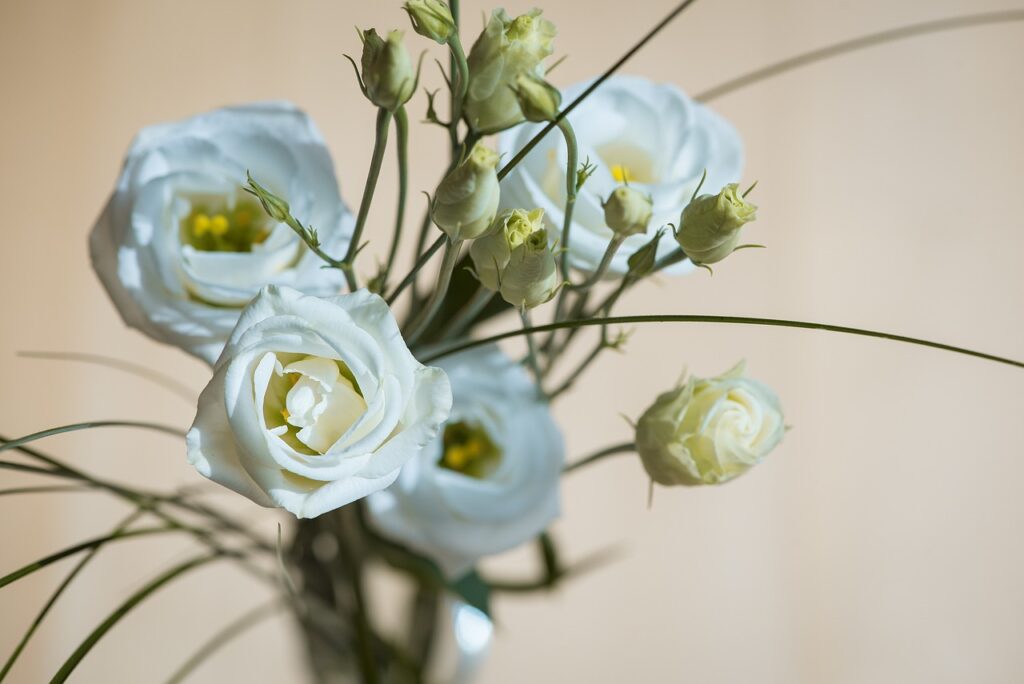
Prairie gentian or Lisianthus needs germination temperatures between 15 and 23 degrees. To be honest, they are high drama for the best gardeners so wouldn't advise growing these for a wedding bouquet unless you like spending weeks checking temperatures and babysitting your seedlings.
Did you know that you can take my course and learn how to become a Garden Ninja yourself? Click here for details
Fragrant and delicate, freesias add a sweet, feminine touch to bouquets with their slender stems and colourful blooms. You plant Freesias as corms, a bit like bulbs, usually these have been hjeat treated to mimic their original native conditions as they are a South African plant. Easy to grow, yes, but is it worth the effort? There are two types of corms available for planting: prepared and unprepared.
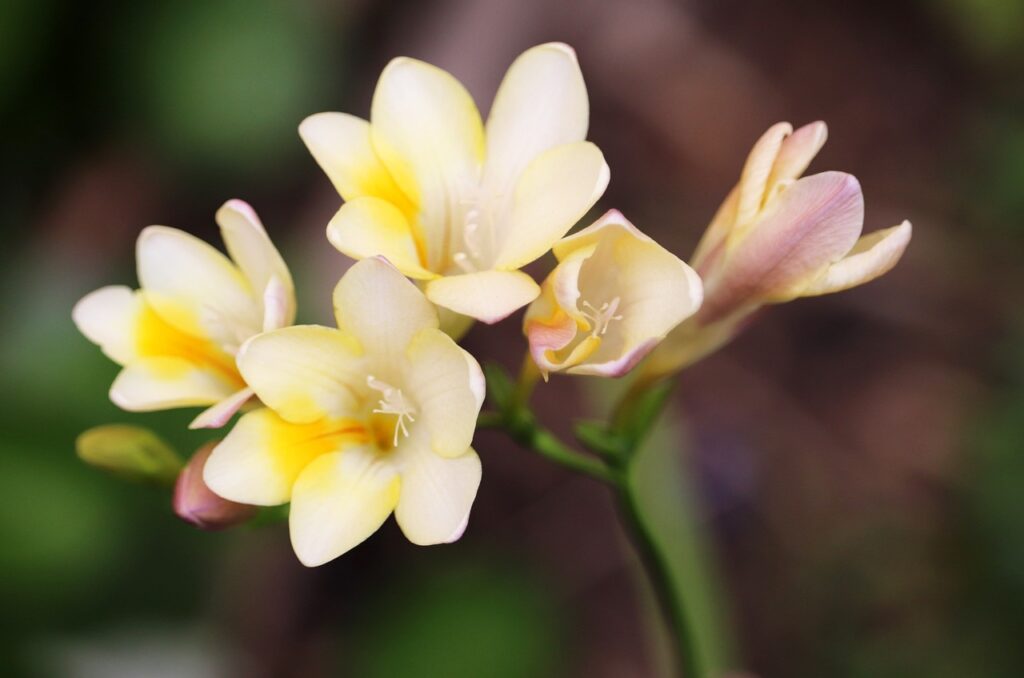
Prepared corms can be purchased in the spring and are ideal for those who want early-blooming flowers in July and August. However, these corms only flower for one season. So the question is, why not just buy them as cut flowers instead and save yourself the drama!
On the other hand, unprepared corms are planted in late summer and can withstand mild climates with minimal or no frost. They offer the advantage of remaining in place throughout the winter and flowering the following spring, providing a beautiful display of colours.
With their spicy-sweet fragrance and clustered blooms, stocks are perfect for adding fragrance and texture to bouquets. This is a half hardy annual so needs consistent warm temperatures. Frost, exposure, or driving rain will lead to reduced flowers or even no flowers at all. Another plant that looks fabulous but unless you have a greenhouse and heater isn't worth the drama!
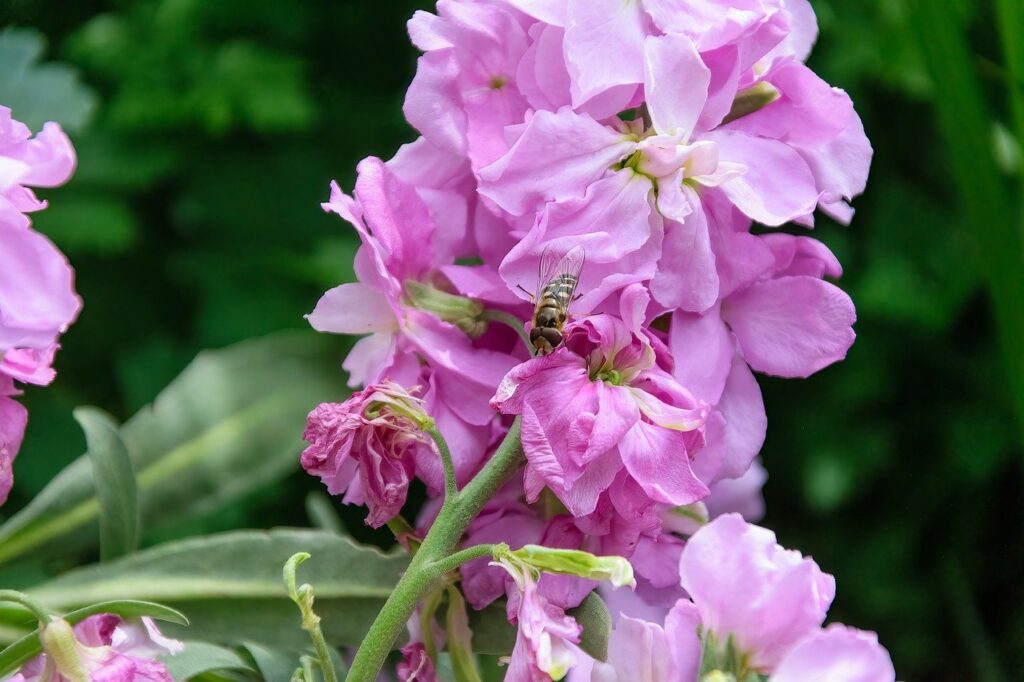
Also known as Cornflowers, Bachelor's Buttons are charming wildflowers that add a rustic, country-inspired vibe to bouquets. Now this really is an easy to grow flower perfect for those wanting to know how to grow your own wedding bouquet! Cornflowers need poor soil and full sun, so they are perfect for south-facing gardens.
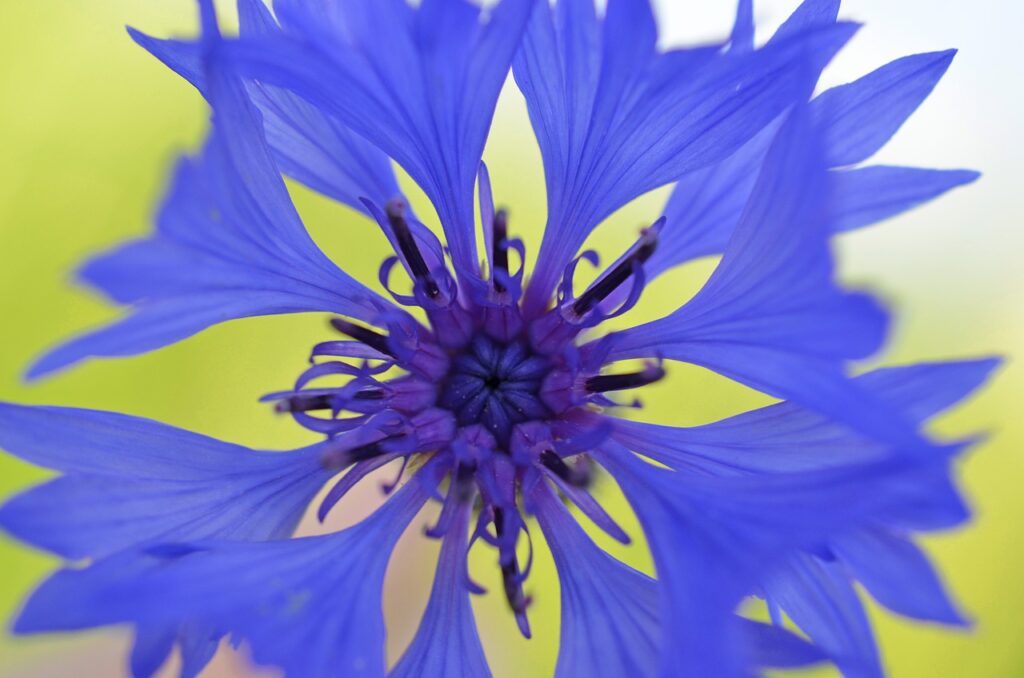
Cornflowers are an annual so you sow them early spring in the UK, and they flower from July to September. Great for wedding suit buttonholes (as the name suggests) and as a good filler flower for bridal bouquets.
Delicate and airy, Baby's Breath is a classic filler flower that adds volume and softness to bouquets. To grow annual gypsophila, sow seeds directly in the desired location in April or September, avoiding root disturbance. For cutting flowers or wedding bouquets, sow successively every few weeks (ie keep sowing each week into different seed trays or prepared garden raised beds) from April to June.
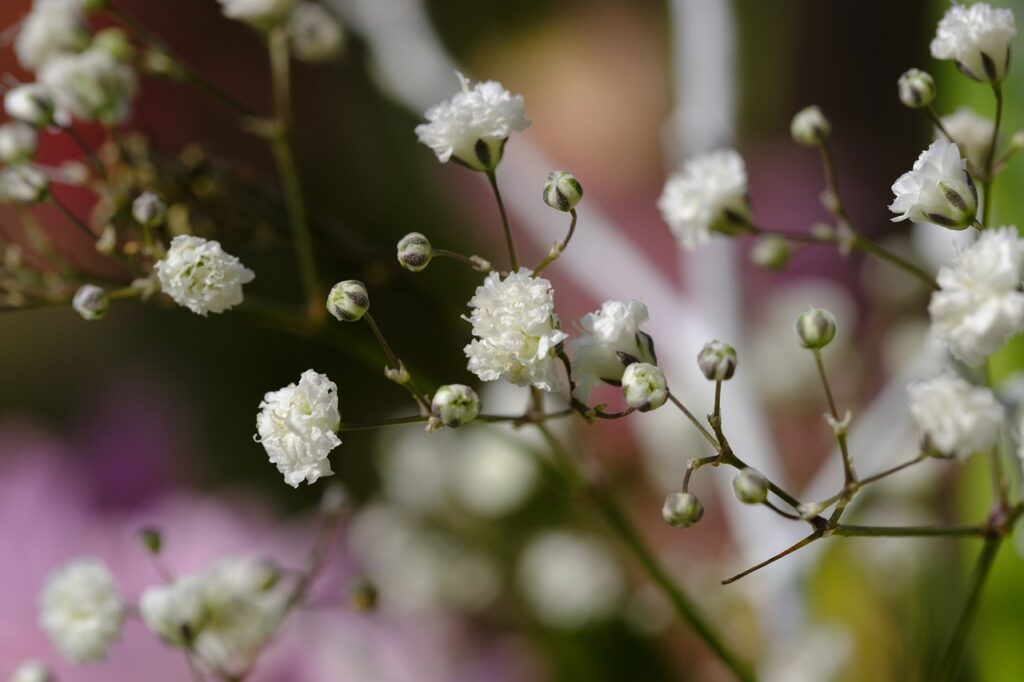
Perennial gypsophila can be propagated through basal cuttings. Again, it's quicker and cheaper to buy Gypsophilia to grow it, as any root disturbance usually stunts its growth.
Long-lasting and versatile, carnations come in a wide range of colours and are perfect for adding texture and volume to bouquets. White, pink, and red are popular colours for Carnations. Once they are established, they are easy to grow in free-draining soil. They too make great button holes or lapel flowers. The best way to grow Carnations is by softwood cuttings.
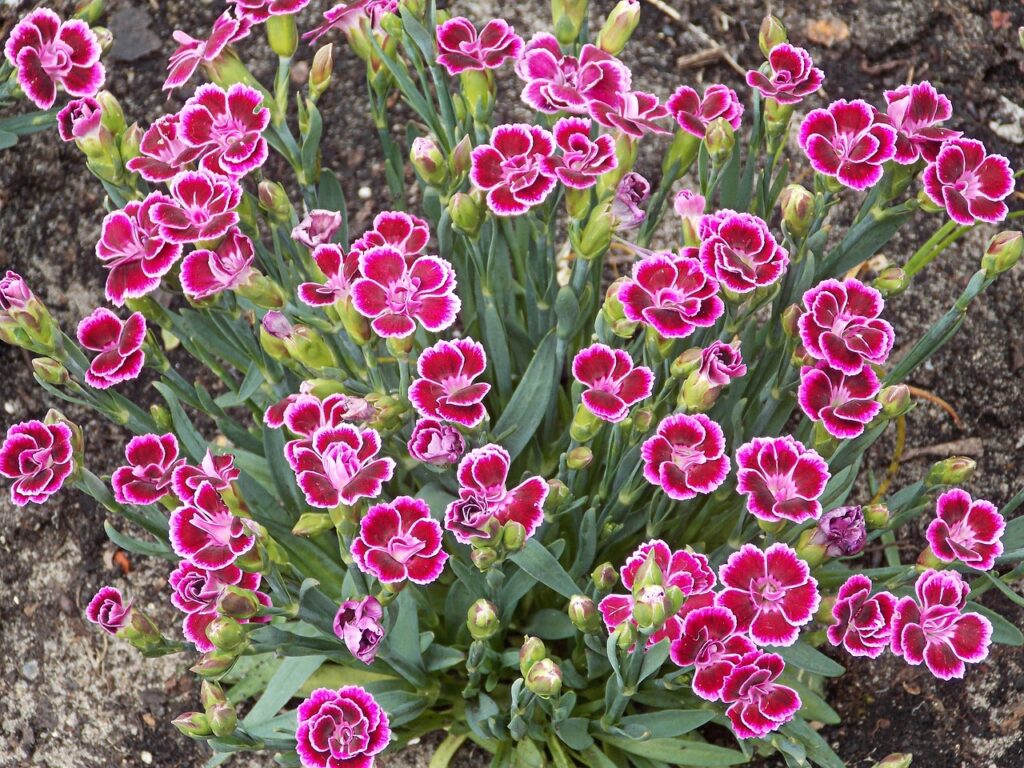
If you know someone with Dianthus already growing in their garden, take cuttings the year before your wedding, grow them in pots somewhere protected and plant them into free draining soil the spring after—harvesting the cut flowers in August.
Once you've chosen your wedding bouquet flowers, it's time to plan your garden to be able to grow them successfully. Determine the space you have available for planting and consider factors like sunlight, soil quality, and water access.
You can grow your flowers in containers or raised beds if space is limited. Make sure to research the specific growing requirements of each flower variety and choose ones that thrive in your local climate. Alswo make sure you have enough time to care and look after them. If you have holidays planned during peak growing season, you will need someone to come water, feed and potentially deadhead them for you.
Select a sunny spot in your garden that receives at least 6-8 hours of sunlight per day. Most flowering plants in the list above thrive in full sun, so prioritize areas with ample sunlight and protection from drying cold winds.
Ensure your soil is well-drained, fertile, and rich in organic matter. Incorporate compost or aged manure into the soil to improve its texture and fertility. Conduct a soil test to determine its pH level and nutrient content, and make amendments as needed.
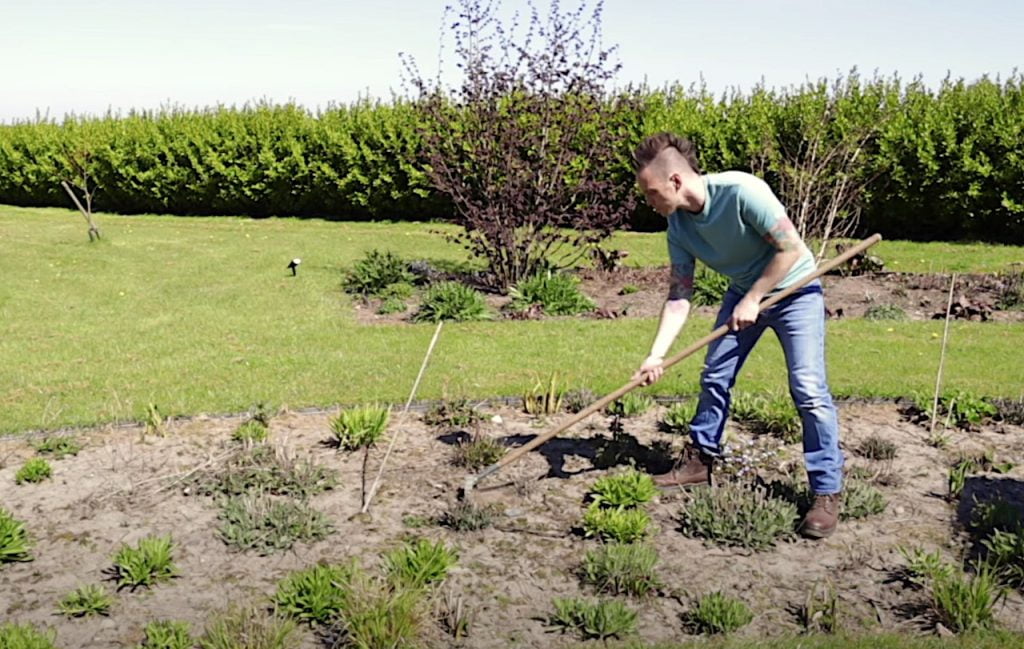
Choose a variety of flowers that are well-suited for cutting and arranging. When selecting your flowers, consider factors such as bloom time, height, colour, fragrance, and vase life. Opt for a mix of annuals, perennials, bulbs, and shrubs to provide continuous blooms throughout the growing season.
Determine the layout of your garden beds and planting areas. Arrange your flowers in rows, clusters, or mixed plantings based on their growth habits and aesthetic appeal. Leave adequate space between plants to allow for air circulation and easy access for cutting.
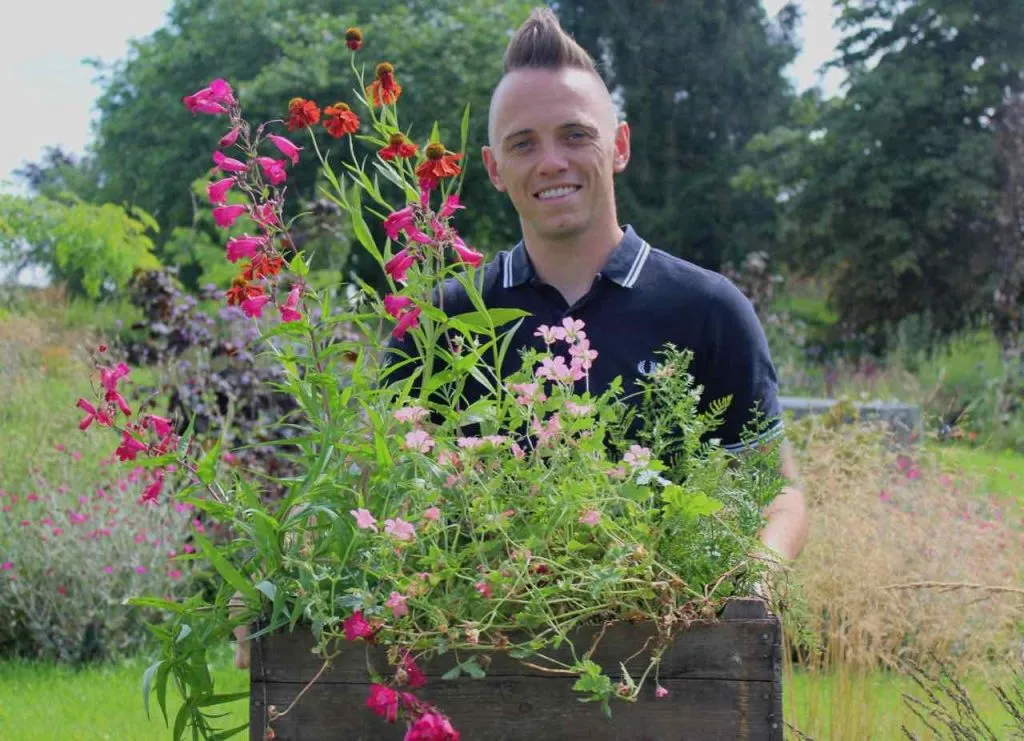
Plan for succession planting to ensure a continuous supply of blooms throughout the season. Stagger the planting times of your flowers to extend the flowering period and avoid gaps in bloom. Consider planting early, mid and late-season varieties to maintain a steady harvest of fresh flowers.
Incorporate companion plants that attract beneficial insects, repel pests, and support and structure your cut flowers. Plant herbs, such as lavender, rosemary, and mint, and flowering perennials, like yarrow, echinacea, and rudbeckia, to create a diverse and balanced ecosystem in your garden. Moreover, these plants can help protect your wedding flowers from pests and diseases.
Install stakes, obelisks, or other support structures for tall or sprawling flowers that may require additional support. This will help prevent damage to the stems and keep your flowers upright and accessible for cutting.
Establish a regular watering schedule to keep your cut flower garden hydrated and healthy. Monitor soil moisture levels and water deeply as needed, especially during dry spells or hot weather. Mulch your garden beds to conserve moisture, suppress weeds, and maintain soil temperature.
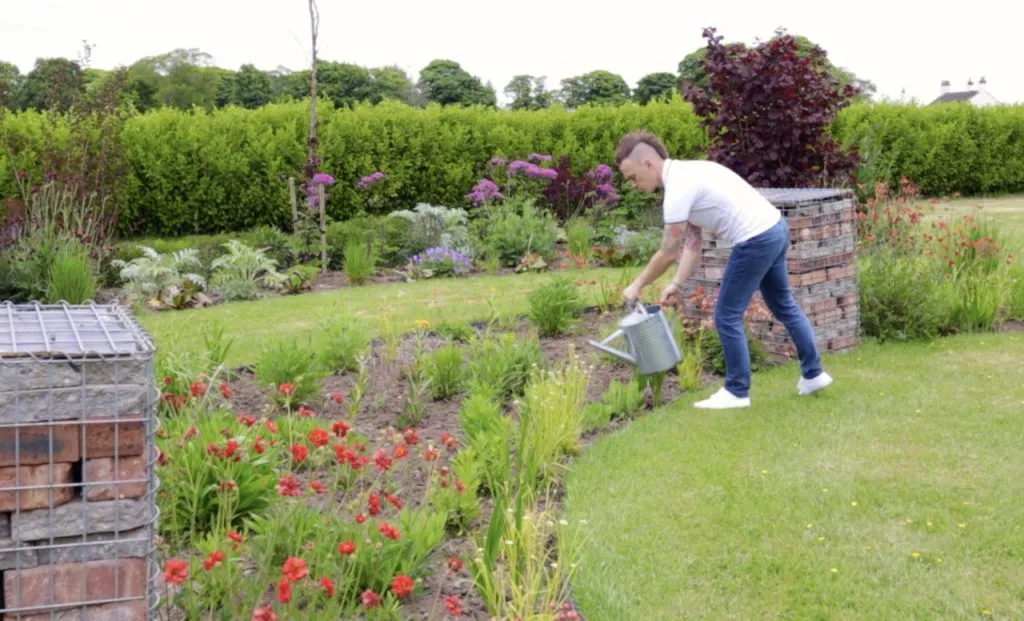
Harvest your flowers early in the morning when they are fully hydrated and at their peak freshness. Use sharp, clean pruners to make clean cuts at an angle, and place the stems immediately in a bucket of water. Remove any foliage that will be submerged in water to prevent bacterial growth, and change the water regularly to prolong the vase life of your flowers.
For most bridal bouquets using perennial plants (those that come back year after year) you need to start planning and planting your cut flower garden at least 1 year before your wedding. Ideally, you would start growing them 2 years before your wedding for optimal blooms. Most perennials, roses and peonies take at least 2 years to start to bloom consistently.
Did you know that you can take my course and learn how to become a Garden Ninja yourself? Click here for details
Let's now discuss the nightmare scenario of all brides who are growing their own bouquet: the fact that your beloved flowers may fail to flower on time, leaving you bouquetless for your wedding!
Here are some steps you can take to address the situation and still have beautiful blooms for the wedding:
Assess the current stage of your flowers and compare it to the wedding date. Determine if there is enough time for the flowers to grow and bloom before the event. Remember that most perennial plants will need to be at least 2 years old to flower properly.
Consider the typical bloom time for the specific flowers you've chosen. Some flowers may take longer to reach maturity, while others bloom relatively quickly.
If your own flowers are not on track to bloom in time, consider purchasing blooms from a local florist or flower market. Consult a professional florist who can advise on available flowers and design options. Florists have access to a wide variety of flowers and can help create stunning arrangements.
This allows you to have the specific flowers you planned for, even if they are not from your garden. In my opinion, you should just do this from the get-go, as trying to learn how to grow your own wedding bouquet can add another level of stress to your big day.
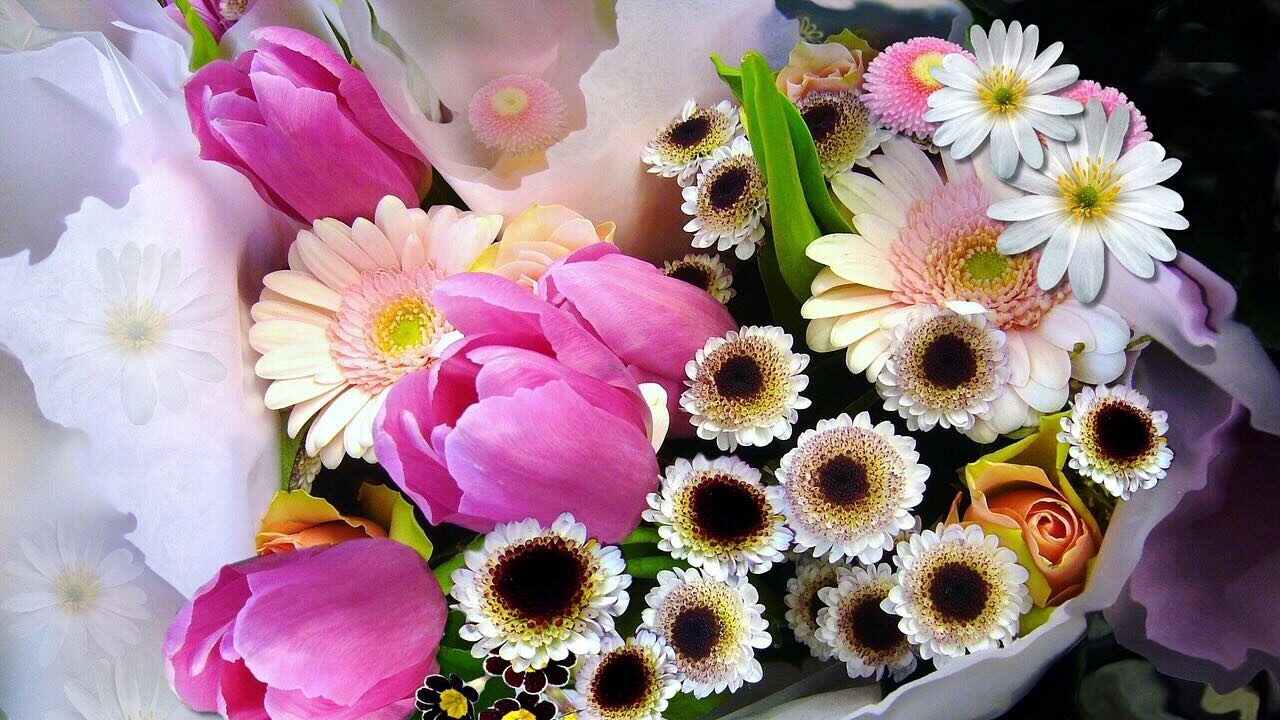
Is there anything else flowering in your garden that could work? Don't be stuck with the original plan if things don't work out; your garden may provide other beautiful flowers in lieu of your original design. Explore alternative flowers that are readily available during the wedding season. Local florists can guide you on seasonal blooms that will be in abundance and can complement your original choices.
Check with local flower farms or markets to see if they have your desired blooms already in stock or the closest alternative. Some farms offer pick-your-own flower options, allowing you to select fresh blooms close to the wedding date but again factor in the time it takes to do this!
Consider using potted plants or flowering plants as an alternative. These can be arranged beautifully and planted in your garden or home after the wedding, serving as a lasting memory. Houseplants are a great option for technologically sound wedding flowers. They can be reused and give your wedding decor a lush, verdant green appearance.
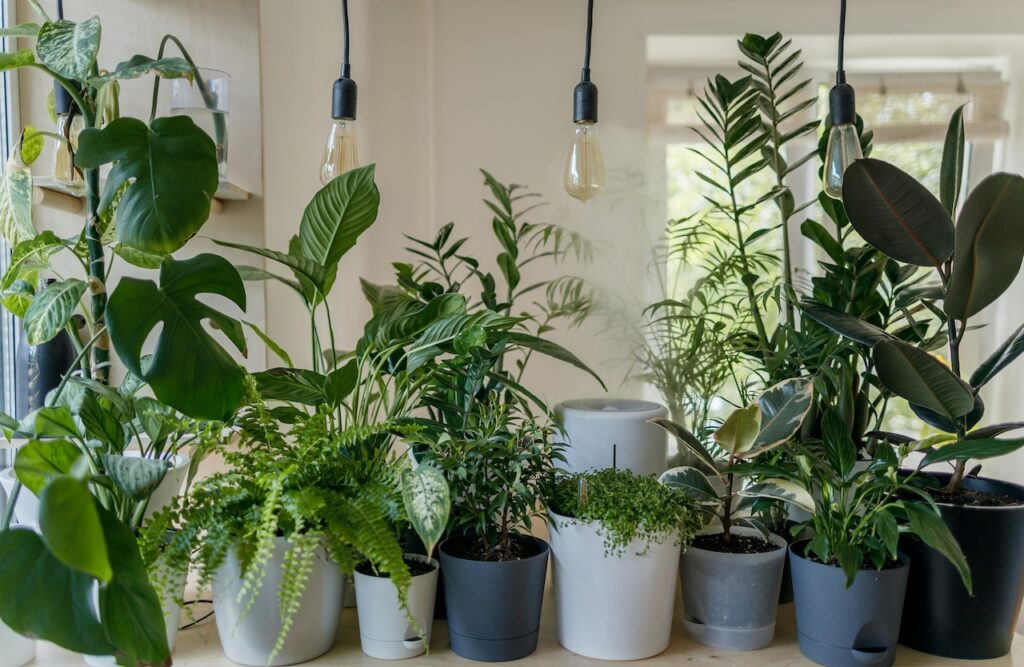
As your wedding day approaches, keep a close eye on your flowers as they begin to bloom. Harvest them a few days before the peak of their freshness— i.e. just as the flowers are about to open or are still in bud. Cut bridal bouquet flowers, preferably in the morning, a day or two before your wedding day, when they're hydrated and full of life.
Use sharp scissors or pruning shears to make clean cuts, and place the stems immediately in water to keep them fresh until it's time to arrange your bouquet.
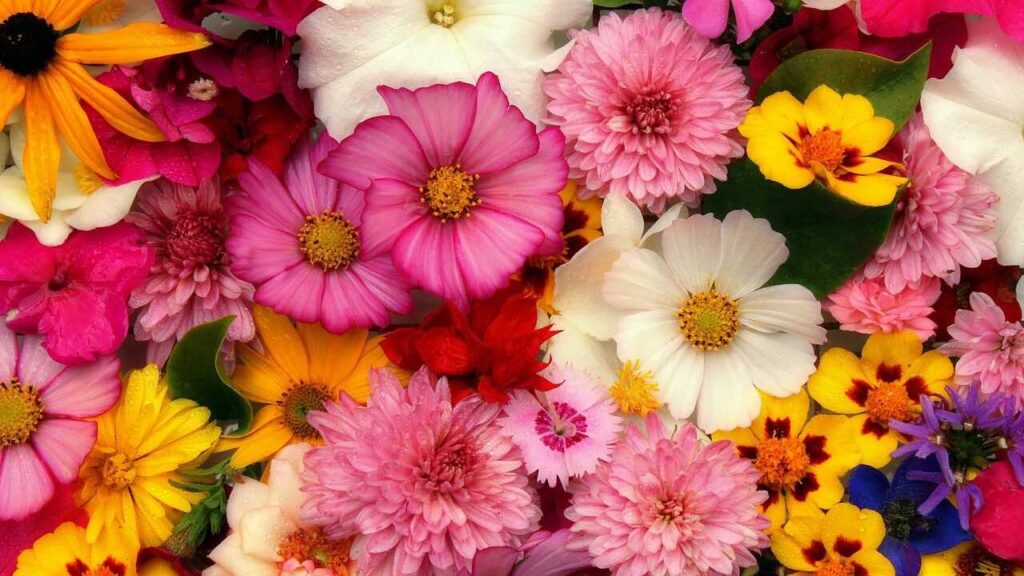
When it's time to create your home grown wedding bouquet, the hard work of growing your flowers is over and its time to let your creativity shine. Start by selecting a focal flower or two and building around them with complementary blooms and greenery. Experiment with different textures, colours, and shapes to achieve the look you desire.
Consider incorporating personal touches like heirloom flowers or meaningful foliage from your garden. It maybe that you start to incorporate the 'Plan B' or back up flowers from florists, flower markets or whatever else is flowering in your garden at the time!
Here are the steps to start building your wedding bouquet:
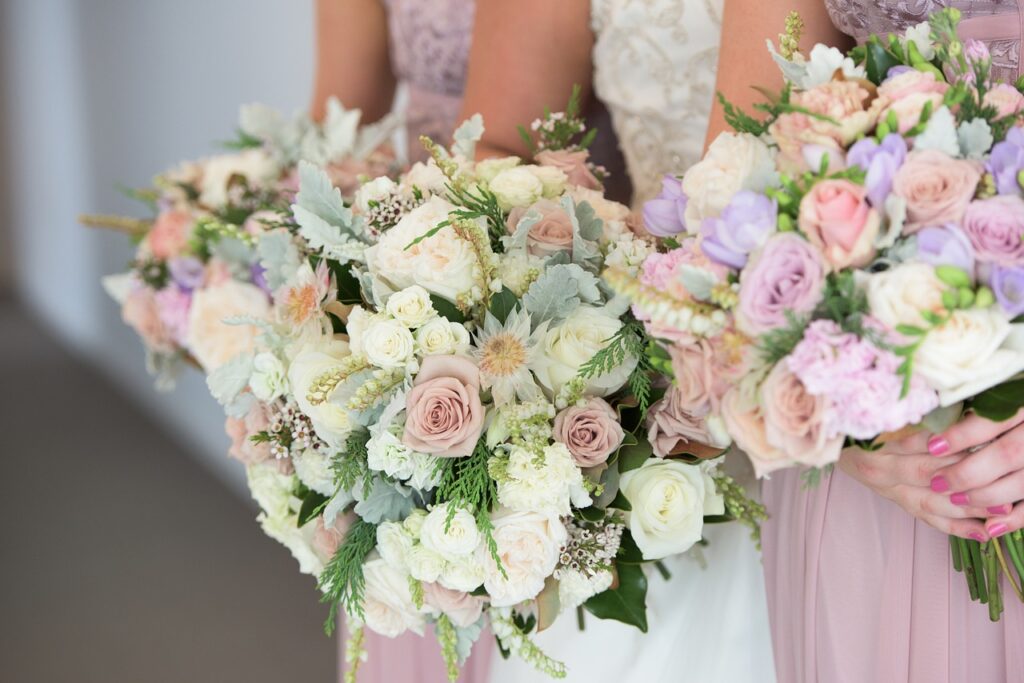
If you're considering growing your own wedding bouquet this guide has now given you the honest advice from a gardening expert. For most people, my advice is not to grow your wedding bouquet. It's fraught full of problems, time management and specific gardening skills that most none-gardeners simply won't have.
If you are up for growing your cut flowers for your wedding, start at least a year in advance. Plan out your flower choices, the soil type, sunlight, and plant plan for the garden where you will grow them. Then, allow for plenty of backup flowers and watch the weather.
Whilst not impossible to grow your own wedding bouquet the chances are you will have far more things to do and the stress of perishable blooms is one thing most brides and grooms don't need!
Have you grown your own wedding flowers? Is so Tweet, Facebook or Instagram me with your stunning pictures! Or let me know below what you took away from the experience! You can also subscribe to my YouTube channel for hundreds of garden design tips, tricks, and hack guides!
Happy Growing!
Lee Garden Ninja



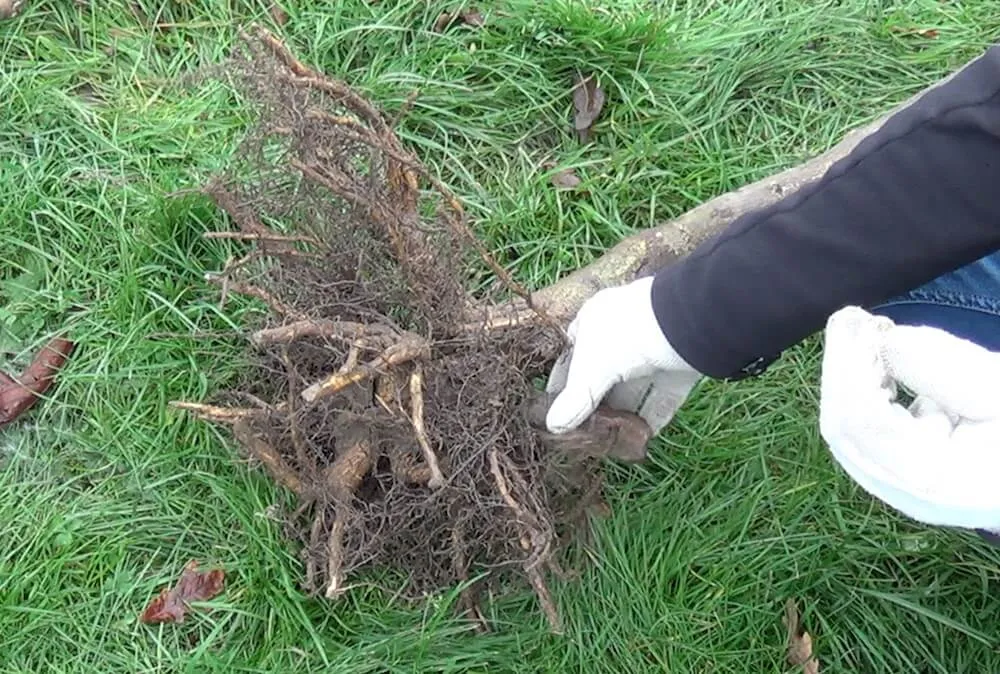
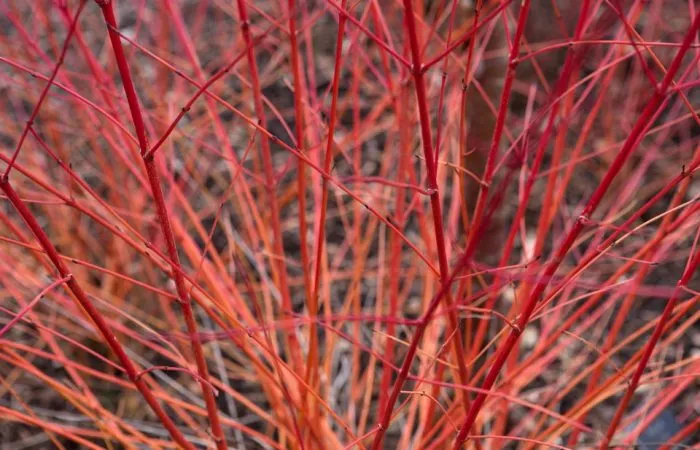
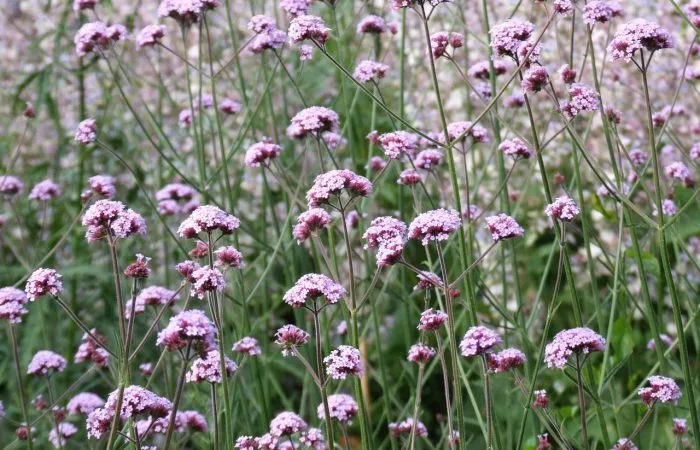
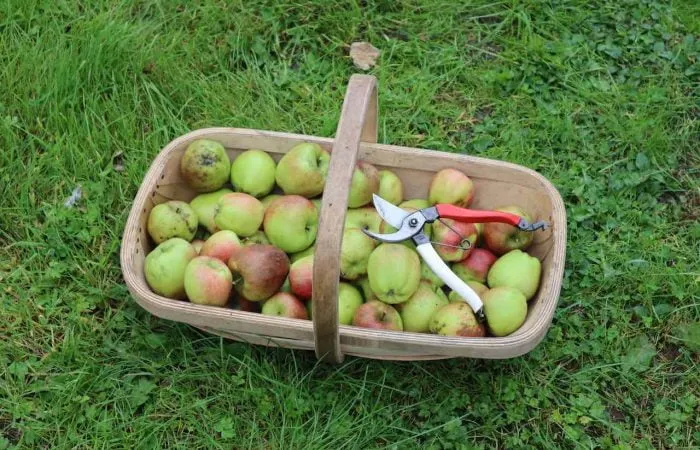
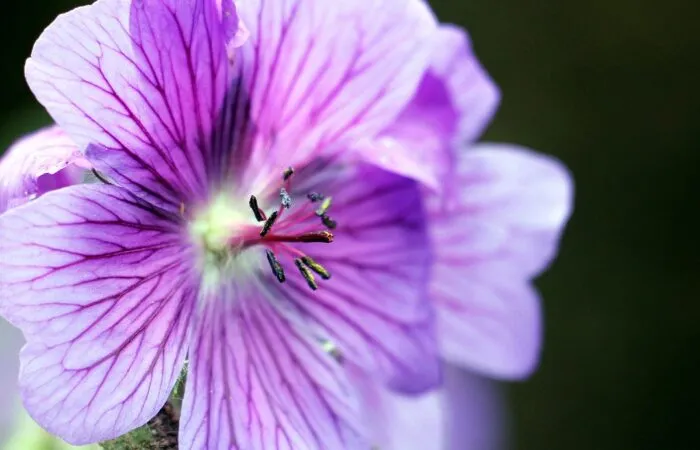
JOIN THE NINJAS

Be the first in line for new Guides, Discount codes and Offers